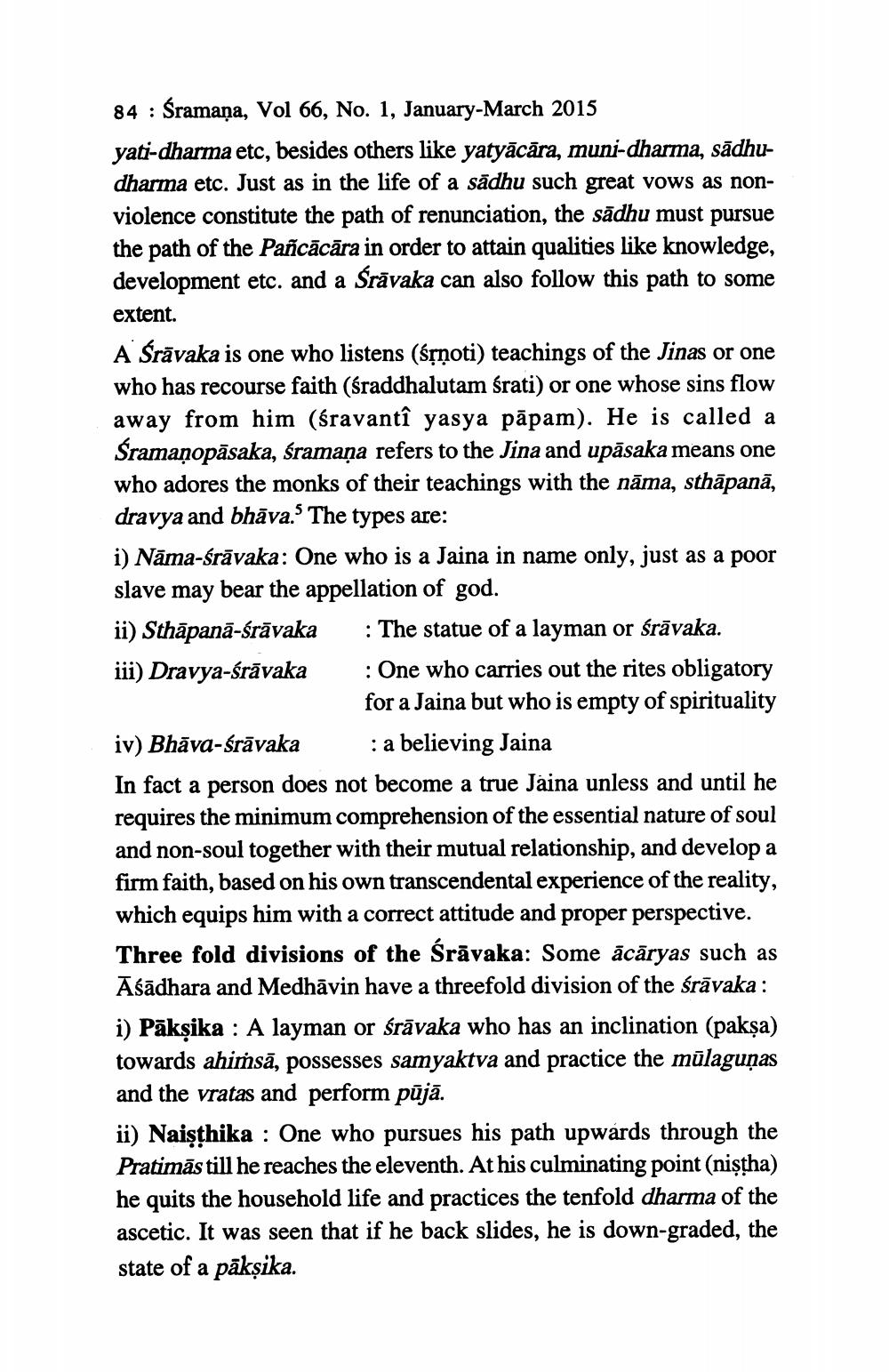________________
84 : Sramaņa, Vol 66, No. 1, January-March 2015 yati-dharma etc, besides others like yatyācāra, muni-dharma, sādhudharma etc. Just as in the life of a sādhu such great vows as nonviolence constitute the path of renunciation, the sādhu must pursue the path of the Pañcācāra in order to attain qualities like knowledge, development etc. and a Srāvaka can also follow this path to some extent. A Śrāvaka is one who listens (śļņoti) teachings of the Jinas or one who has recourse faith (śraddhalutam śrati) or one whose sins flow away from him (śravantî yasya pāpam). He is called a Sramaṇopāsaka, śramaņa refers to the Jina and upāsaka means one who adores the monks of their teachings with the nāma, sthāpanā, dravya and bhāva. The types are: i) Nāma-śrāvaka: One who is a Jaina in name only, just as a poor slave may bear the appellation of god. ii) Sthāpanā-śrāvaka : The statue of a layman or śrāvaka. iii) Dravya-śrāvaka : One who carries out the rites obligatory
for a Jaina but who is empty of spirituality iv) Bhāva-śrāvaka : a believing Jaina In fact a person does not become a true Jaina unless and until he requires the minimum comprehension of the essential nature of soul and non-soul together with their mutual relationship, and develop a firm faith, based on his own transcendental experience of the reality, which equips him with a correct attitude and proper perspective. Three fold divisions of the Śrāvaka: Some ācāryas such as Āśādhara and Medhāvin have a threefold division of the śrāvaka : i) Pākşika: A layman or śrāvaka who has an inclination (paksa) towards ahimsā, possesses samyaktva and practice the mūlaguņas and the vratas and perform pājā. ii) Naişthika : One who pursues his path upwards through the Pratimās till he reaches the eleventh. At his culminating point (niştha) he quits the household life and practices the tenfold dharma of the ascetic. It was seen that if he back slides, he is down-graded, the state of a pākṣika.




